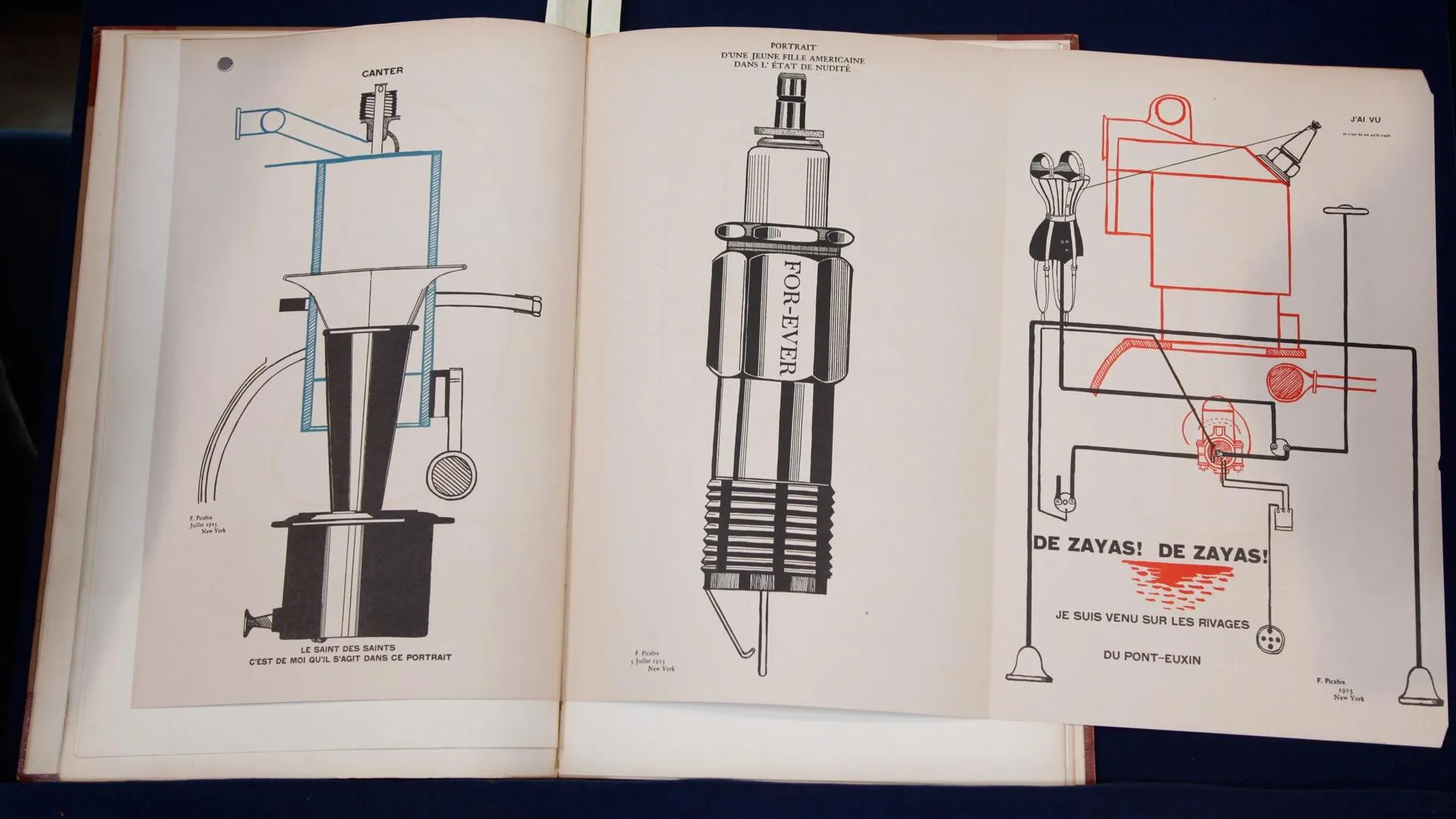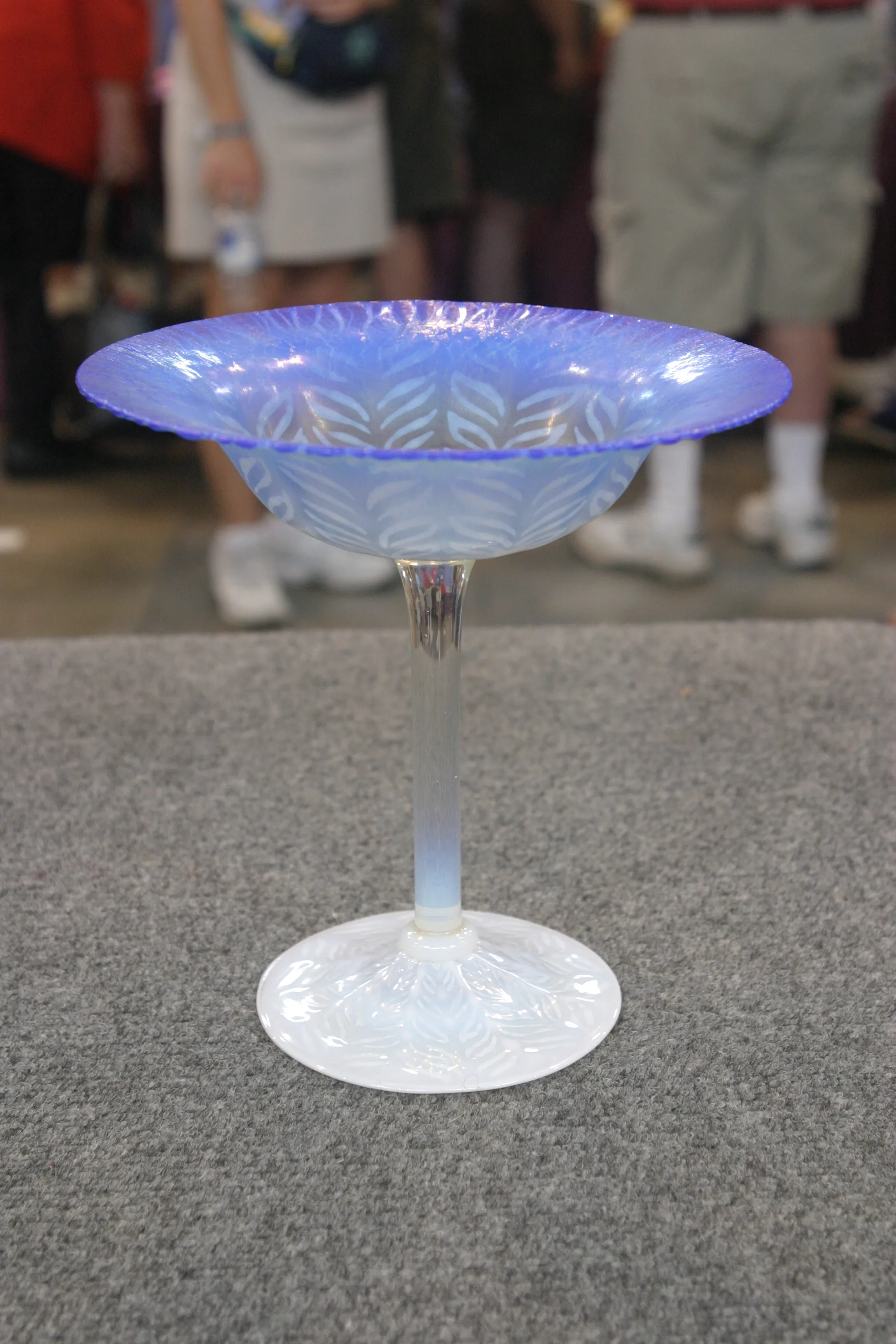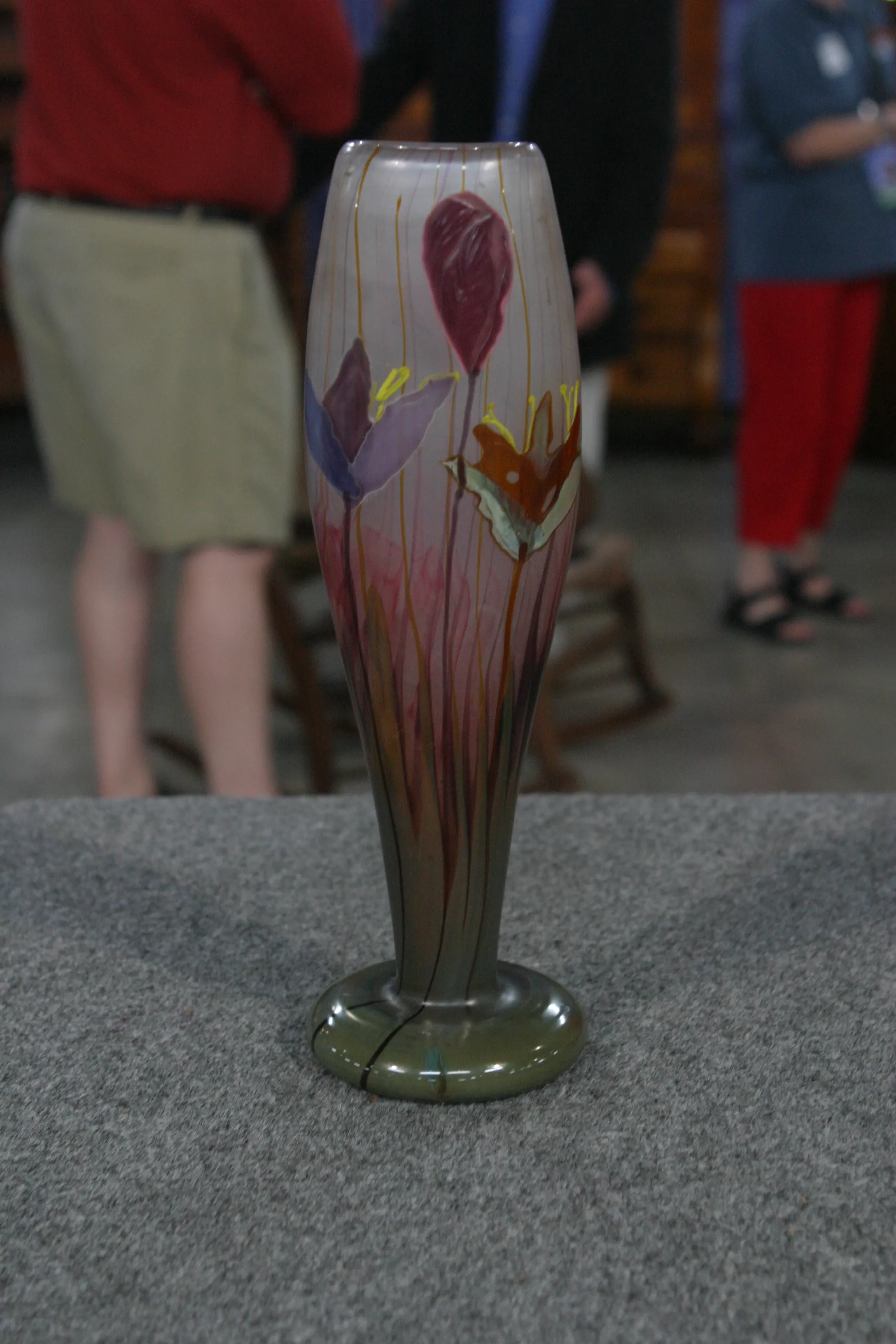GUEST: I was in London in the '80s, visiting my brother-in-law and my sister-in-law, who were living there at the time, and I went to the street markets in London and found these pieces. I like things that are unusual and have character, and I thought these three pieces had a lot of character and were very unusual. This ring has a ship under what I think is rock crystal. The slide I know used to be worn around the neck with probably a velvet ribbon. And this ring, I loved it because it's as interesting underneath as it is on top.
APPRAISER: Let's start with the ring closest to me. And this is a Georgian ring. You thought it was...
GUEST: I thought it was early 1800s.
APPRAISER: It's a little older than that. It's more like 1750, and I'll show you why. This is a beautiful family crest ring. The center of the ring is a carnelian intaglio with a detailed carving of the family crest, and it was their family. It could probably be researched. The shoulders of the ring are chased and engraved and have rose-cut diamonds set into them. And what's remarkable about rings of the Georgian era is if I show the inside of the ring, it's as decorated and engraved as the outside, in a place where only the owner would see it. A wonderful example, rare and hard to find, in beautiful, almost unworn, condition.
GUEST: Oh! Good.
APPRAISER: The next piece that you found, it was a slide and they just centered it on their throat. How old did you think this was?
GUEST: Early 1800s again?
APPRAISER: On this one, you're off by almost 200 years. This is called a Stuart crystal, and it's from the 17th century, meaning it's about 1650.
GUEST: (laughing): Really? Oh, my goodness.
APPRAISER: And these came into fashion during the era of the Stuarts in the early 1600s and continued through the century. It was kind of the tail end of the Renaissance, and the earliest ones are decorated with enamel on the back. This one is just plain gold. But the front of this one is extraordinary. It has faceted rock crystal, and under that are these three-dimensional figures that are enameled with a border of gold around that and a colored background. And I think there's a cupid in there with a bow and arrow. But remarkable that a jewel like this from 1650 could survive and still could be worn on a ribbon and be a functional, beautiful piece of jewelry.
GUEST: It could be; right.
APPRAISER: The last piece that you brought, not decorated on the inside. This ring is all about the front and the outside. And you can see that it's a ship. What's remarkable about this carving is the detail. Some of these pieces of ivory carved as thin as a strand of hair. And although some of the rigging has fallen down, this is amazing. And this ring is quite early. It dates about 18th century. So, what do you think you might have spent?
GUEST: I'm sure I didn't spend any more than $200 on any one of them.
APPRAISER: Our Georgian intaglio ring, the crest ring, in today's retail market, this ring would bring approximately $4,500.
GUEST: Oh, my!
APPRAISER: The Stuart crystal slide in the center, highly collectible, quite rare, and this one has a most detailed and unusual subject matter. This slide would be about $6,500.
GUEST: (laughing): Oh, really? Oh!
APPRAISER: And the ship's model under glass-- that's not crystal, that one's under glass... Okay. I've never quite seen another one. Ships collectors are fierce, and that one I see at $7,500.
GUEST: Oh, my goodness.
APPRAISER: In retail for a collector.
GUEST: Oh, my gosh, that's fantastic.











